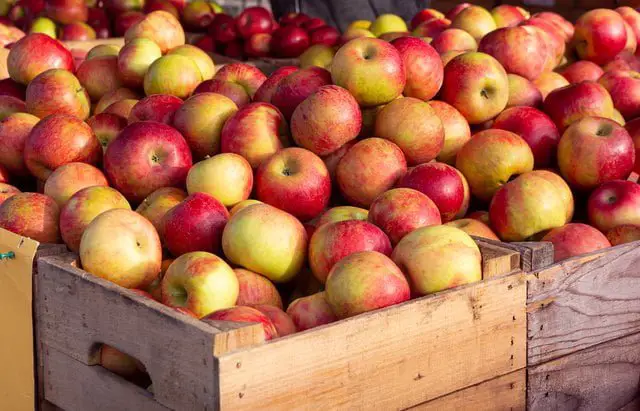Knowing the optimal time to harvest Honeycrisp apples is crucial for growers seeking to maximize their yield and produce the best quality fruit. As a Honeycrisp apple grower, you understand that picking these apples too early can lead to underdeveloped flavors, while waiting too long can result in a loss of crispness and texture. In order to strike the perfect balance, it is essential to consider factors such as fruit color, firmness, and sugar content. This article aims to provide you with a comprehensive guide on when to harvest Honeycrisp apples, equipping you with the knowledge and expertise needed to make informed decisions and ensure a successful harvest season.
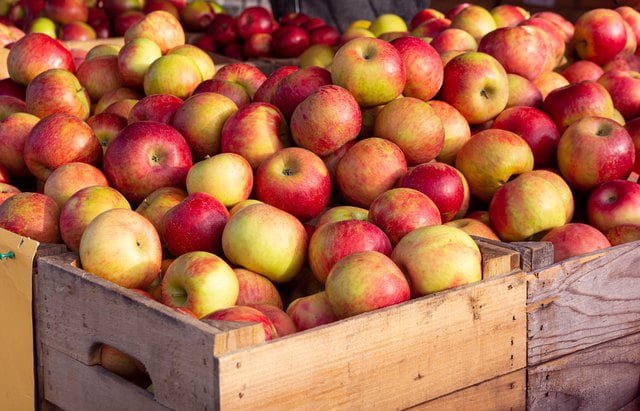
Factors Affecting Harvest Time
Color
The color of Honeycrisp apples is an important indicator of maturity and can vary between green, yellow, and red. As the apple ripens, it will develop more vibrant colors. While color alone is not a reliable indicator of harvest time, it can be used in conjunction with other factors to determine optimal harvest time.
Firmness
Firmness is a crucial factor when determining the readiness of Honeycrisp apples for harvest. A ripe apple will have a firm and crisp texture when bitten into. Too much firmness may indicate that the apple is not yet ripe, while excessive softness may indicate over-ripeness. It is important to find the right balance of firmness to ensure optimal flavor and texture.
Dropping
Another factor to consider is whether the apples exhibit dropping behavior. When apples are ready for harvest, they may begin to drop from the tree naturally. However, it is important to note that excessive dropping can lead to bruising and reduce the apple’s shelf life. Therefore, it is crucial to monitor dropping behavior carefully to prevent any undesirable issues.
Seed Color
The color of the seeds inside the apple can also provide some insight into its maturity. As the apple matures, the seeds will change from a whitish color to a dark brown. This change in seed color is an indication that the apple is nearing its optimal harvest time. However, it is important to note that seed color should not be the sole determining factor, as other indicators play an essential role in determining proper harvest time.
Starch Conversion
Starch conversion is a biochemical process that occurs during the ripening of apples. As the apple ripens, the starches within it convert into sugars, resulting in sweeter and more flavorful fruit. Monitoring the starch conversion by conducting a starch iodine test can help determine the optimal time for harvesting Honeycrisp apples.
Harvest Time Indicators
Ground Color
Examining the ground color or background color of the apple can be a useful indicator of ripeness. As the apple approaches maturity, the ground color changes from a greenish hue to a more yellow shade. However, this method is subjective and may vary depending on lighting conditions, making it necessary to consider other indicators in conjunction.
Fruit Firmness Test
Conducting a fruit firmness test by applying pressure to the apple can help determine its readiness for harvest. A ripe Honeycrisp apple will have a firm consistency, and when pressure is applied, it should dent slightly but not bruise. If the apple feels too firm, it may require more time on the tree to reach its optimal ripeness.
Starch Iodine Test
The starch iodine test involves cutting a small slice from the apple and applying iodine solution to the exposed flesh. If the iodine solution turns blue-black, it indicates the presence of starch, suggesting that the apple is not fully ripe. However, as the apple matures, the iodine solution will turn brown, indicating that starch conversion has occurred, and the apple is ready for harvest.
Seed Color
As mentioned earlier, monitoring the color of apple seeds can also serve as an indicator of ripeness. If the seeds have turned from white to dark brown, it suggests that the apple has reached its optimal maturity and is ready for harvest. However, it is important to consider other factors as well, as seed color alone may not provide a complete picture of the apple’s readiness.
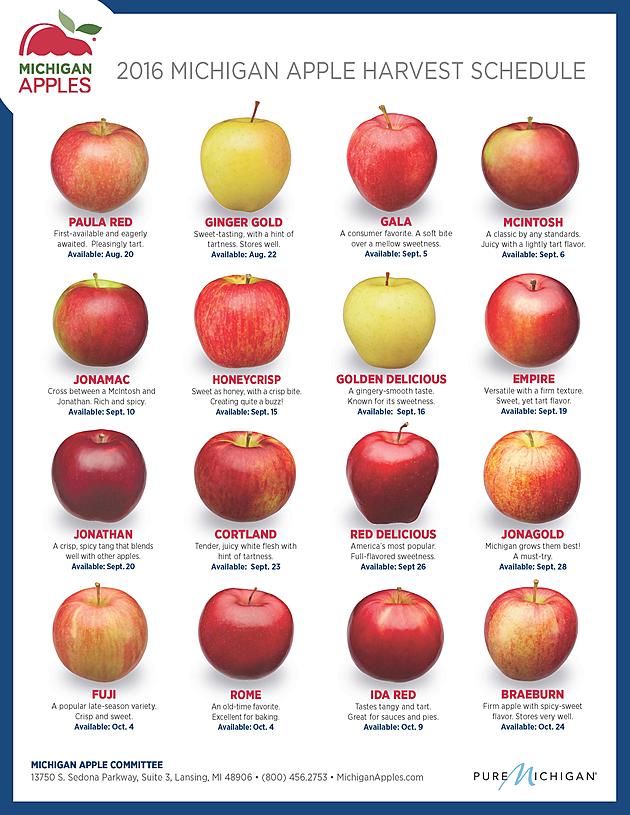
Timing Considerations
Climate Factors
Climate plays a significant role in determining the harvest time of Honeycrisp apples. The apple variety requires a specific number of hours of exposure to cold temperatures during the winter, known as chilling hours, to break dormancy and achieve proper fruit development. Additionally, the prevailing weather conditions during the growing season can affect the rate of apple maturation, with cooler temperatures generally delaying ripening.
Orchard Location
The geographical location of the orchard can also impact the harvest time of Honeycrisp apples. Apples grown in more northern regions tend to have a shorter growing season and may require earlier harvesting. In contrast, apples grown in southern regions with longer growing seasons may extend the harvest period and allow for later harvesting. Therefore, understanding the specific characteristics of the orchard’s location is vital for determining optimal harvest timing.
Grower Preferences
Grower preferences also play a role in determining harvest time. Some growers prefer to harvest apples earlier to capture a slightly tart flavor, while others may choose to wait until the fruit is fully ripe to achieve maximum sweetness. These preferences can vary depending on the target market or specific customer demands, and growers must carefully consider these factors when deciding on the harvest time for Honeycrisp apples.
Harvesting Techniques
Hand Harvesting
Hand harvesting is a traditional method where individual workers manually pick the apples from the trees. This technique allows for careful selection and handling of the fruit, minimizing damage and ensuring optimal quality. Hand harvesting is particularly suitable for orchards with delicate or sensitive apple varieties like Honeycrisp, where mechanical harvesting may cause bruising or other damage.
Ladder Harvesting
Ladder harvesting involves using ladders to access the apples higher up in the trees. This technique is commonly used when the branches are not within reach from the ground. Ladder harvesting allows for more efficient picking of the fruit, ensuring that the apples are harvested at their peak ripeness. However, it is important to ensure proper ladder safety measures are in place to prevent accidents or injuries.
Mechanical Harvesting
Mechanical harvesting involves the use of specialized machinery to shake the apple trees, causing the ripe fruit to fall onto catching frames or conveyor belts. This method is efficient and can handle large volumes of apples quickly. However, mechanical harvesting may not be suitable for all apple varieties, especially those prone to bruising or damage. Honeycrisp apples, with their relatively delicate skin, may require more care and consideration when using mechanical harvesting methods.
Storing Honeycrisp Apples
Temperature and Humidity
Proper storage conditions are crucial for maintaining the quality and freshness of harvested Honeycrisp apples. The recommended storage temperature for Honeycrisp apples is between 32-35°F (0-2°C). Additionally, maintaining a relative humidity of around 90-95% helps prevent moisture loss and keeps the apples crisp. It is important to monitor and control these conditions to maximize the shelf life and preserve the apple’s flavor and texture.
Packaging and Handling
Appropriate packaging and careful handling are essential when storing Honeycrisp apples. Using perforated plastic bags or other breathable packaging materials can help regulate the exchange of gases, preventing a build-up of carbon dioxide and excessive water loss. Additionally, handling the apples gently and avoiding dropping or stacking them improperly can minimize bruising and prolong their shelf life.
Post-Harvest Ripening
Temperature and Ethylene Exposure
After harvest, Honeycrisp apples can continue to ripen if exposed to the right conditions. The storage temperature should be adjusted accordingly to slow down or accelerate the ripening process. Lower temperatures can slow down the ripening, while higher temperatures can speed it up. Additionally, controlling the exposure of harvested apples to ethylene, a natural ripening hormone, can affect the rate of ripening.
Monitoring Fruit Ripening
Regular monitoring of fruit ripening is vital to ensure optimal flavor and prevent overripening. This can be done by sampling and tasting the apples throughout the storage period. By monitoring changes in texture, flavor, and overall fruit quality, growers can adjust storage conditions and determine the ideal time for consuming or selling the ripe Honeycrisp apples.
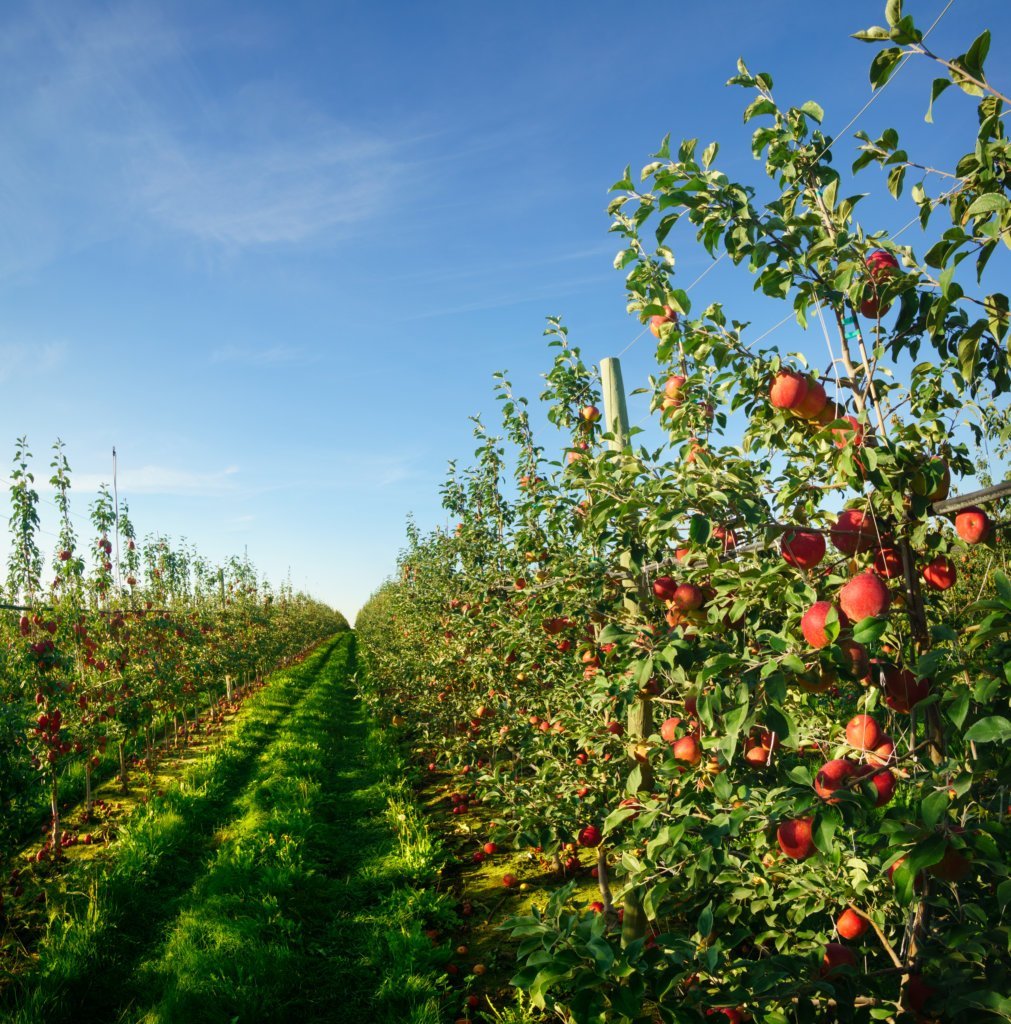
Common Harvesting Mistakes
Harvesting Too Early
One common mistake when harvesting Honeycrisp apples is picking them too early. Immature apples may lack the desired flavor profile and have a less sweet taste. Harvesting too early can lead to a subpar eating experience and potentially dissatisfied customers. Properly monitoring the apple’s indicators of maturity is crucial to determine the optimal harvest window.
Harvesting Too Late
On the other hand, harvesting Honeycrisp apples too late can also have negative consequences. Overripe apples can become soft, mealy, or develop off-flavors, reducing their overall quality and appeal. Additionally, overly ripe apples have a reduced shelf life and may spoil more quickly. Therefore, it is essential to closely monitor the apple’s maturity indicators and harvest at the appropriate time.
Improper Handling
Improper handling of Honeycrisp apples during harvest can result in damage and reduced fruit quality. Dropping or tossing apples in the harvesting process can cause bruising or other physical injuries. This can lead to a shorter shelf life and decreased market value. Proper training and implementing careful handling techniques can help minimize these issues and ensure the highest quality apples.
Optimal Harvesting Periods
Early Season Harvest
The early season harvest for Honeycrisp apples typically occurs in late summer or early fall, depending on the specific growing region and climate. During this period, the apples may exhibit a greener color with less developed flavors. However, some growers may choose to harvest Honeycrisp apples earlier to capture a slightly tart taste or take advantage of an early market.
Mid-Season Harvest
The mid-season harvest for Honeycrisp apples usually takes place in the early to mid-fall, when the apples have developed more vibrant colors and flavors. Many consumers prefer the Honeycrisp apples harvested during this period due to their balance between sweetness and tartness. Monitoring the apple’s maturity indicators closely is crucial to determine the optimal time for harvest during the mid-season.
Late Season Harvest
The late season harvest for Honeycrisp apples occurs in the late fall or early winter, depending on the specific growing region. Apples harvested during this period may have deeper colors and a richer flavor profile. However, it is important to note that the late season harvest also comes with the risk of colder weather, potentially affecting the quality and storage capabilities of the harvested fruit.
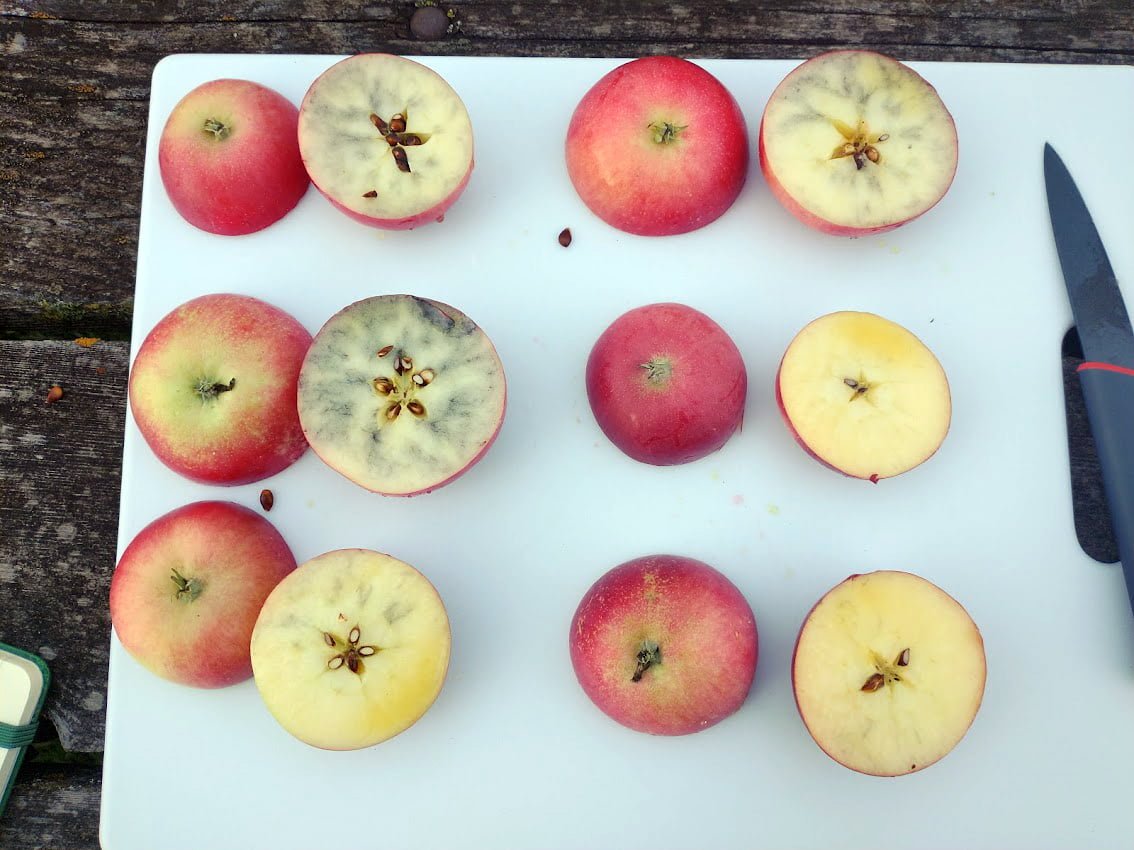
Factors Affecting Flavor
Harvest Time
The timing of harvest plays a significant role in the flavor development of Honeycrisp apples. Picking the apples at their optimal ripeness ensures a balance between sweetness and tartness, resulting in a delightful flavor profile. Harvesting too early or too late can lead to flavors that are either underdeveloped or past their prime.
Cold Storage Conditions
Cold storage conditions after harvest can impact the flavor of Honeycrisp apples. Apples stored at lower temperatures typically experience slower flavor development, resulting in a more subdued taste. On the other hand, apples stored at slightly higher temperatures may exhibit stronger flavors due to the increased metabolic activity. Balancing the storage temperature and monitoring the apples’ ripening progress is crucial to maintaining the desired flavor.
Cultivar Variation
Different cultivars of Honeycrisp apples may exhibit variations in flavor. Factors such as genetic heritage, growing conditions, and storage practices can influence the final taste of the apples. It is important for growers to understand and work with the specific characteristics of each cultivar to ensure the best flavor experience for consumers.
Effects of Overripe Fruit
Texture Changes
When Honeycrisp apples become overripe, their texture can change significantly. The once firm and crisp texture may become soft, mealy, or mushy. Overripe apples may also develop a grainy texture and lose their pleasant crunch. These texture changes can adversely affect the eating experience and reduce the overall quality of the fruit.
Flavor Deterioration
As Honeycrisp apples overripen, their flavor can deteriorate. The balance between sweetness and tartness may shift, leading to a less desirable taste. Overripe apples can also develop off-flavors, such as a fermented or overripe fruit taste. This flavor deterioration can make the apples less appealing and may result in consumer dissatisfaction.
Reduced Shelf Life
Overripe Honeycrisp apples have a shorter shelf life compared to their optimally ripe counterparts. The increased softness and changes in texture make them more susceptible to bruising, rot, and other types of spoilage. This reduced shelf life can lead to increased product waste and financial loss for growers and sellers.
In conclusion, determining the optimal harvest time for Honeycrisp apples requires considering various factors such as color, firmness, dropping behavior, seed color, and starch conversion. The harvest time indicators, including ground color, fruit firmness, seed color, and starch iodine test, provide valuable insight into the apple’s maturity. Timing considerations, including climate factors, orchard location, and grower preferences, further influence the harvest period. Careful handling techniques, including hand harvesting, ladder harvesting, or mechanical harvesting, help ensure minimal damage to the apples during harvest. Proper storage techniques, such as controlling temperature, humidity, packaging, and handling, play a crucial role in maintaining the apples’ quality. Monitoring post-harvest ripening and avoiding common mistakes, such as harvesting too early or too late, are essential for preserving flavor and texture. Optimal harvest periods, including early season, mid-season, and late season, provide different flavor characteristics. Understanding flavor factors, such as harvest time, cold storage conditions, and cultivar variation, is crucial for delivering the desired taste experience. Furthermore, avoiding the effects of overripe fruit, including texture changes, flavor deterioration, and reduced shelf life, is essential for maintaining the highest quality Honeycrisp apples.
